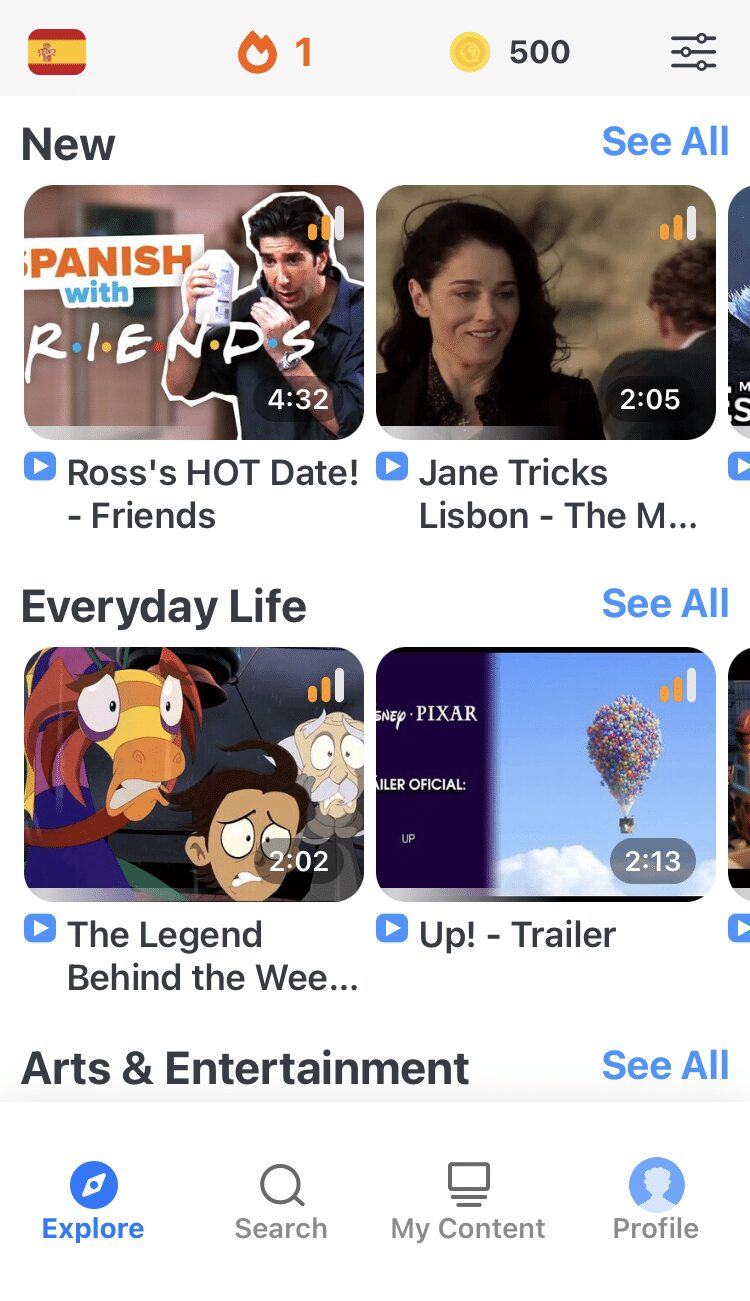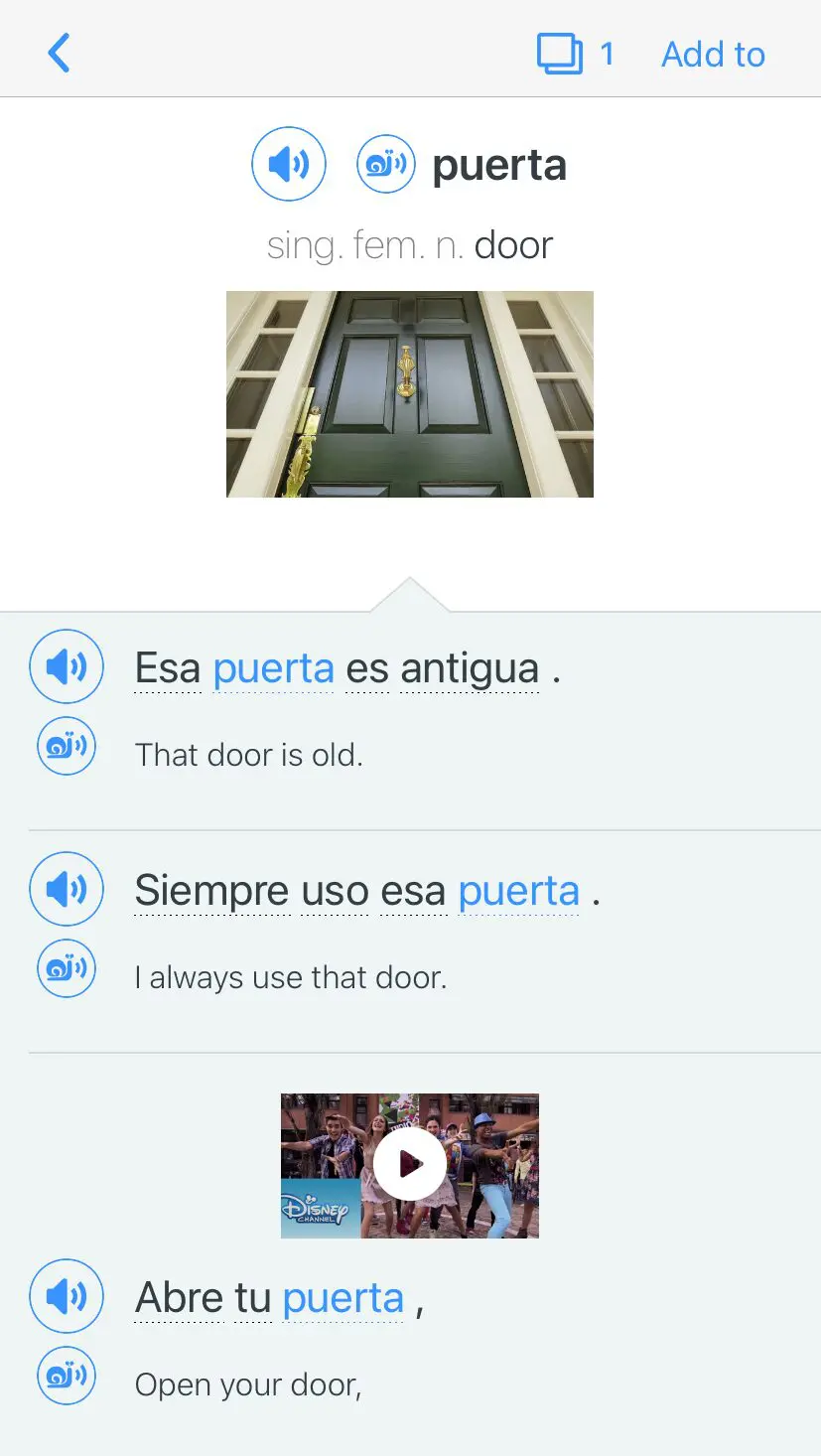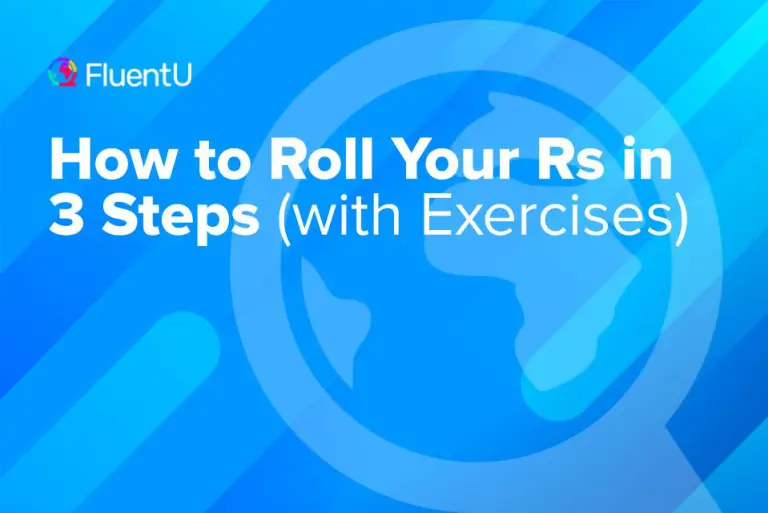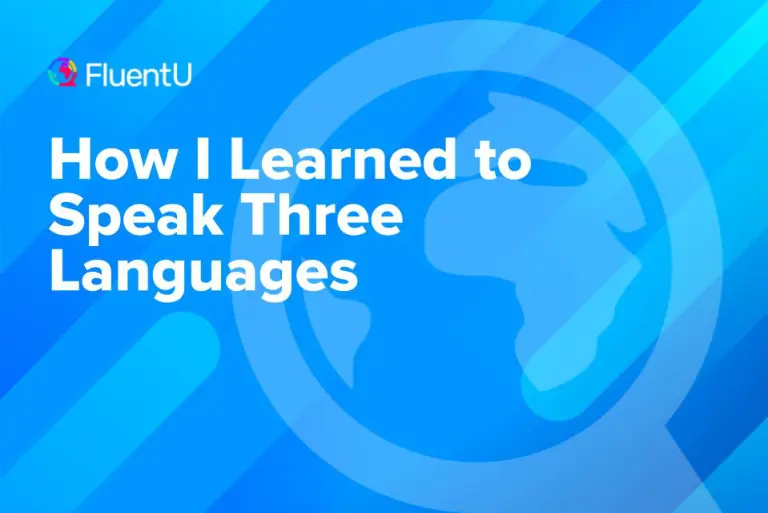5 Ways You Can Learn 5 Languages Just Like I Did

Do you want to know how to learn five languages? Take it from me, it really is possible.
As of this writing, I’m an expert in Berber, upper-advanced in Arabic, advanced in English and intermediate in both French and German.
If you’re an aspiring polyglot, I’ll show you the five key strategies I used to learn my target languages, which you can apply to your own multilingual goals.
Download: This blog post is available as a convenient and portable PDF that you can take anywhere. Click here to get a copy. (Download)
1. Take One-on-one Language Lessons
Recently, I met a Spanish teacher from Catalonia. We talked about her experience studying translation in Barcelona (something I’m interested in).
She has since helped me learn more about the courses available in Spain. Throughout our conversations, she’s taught me some basic Spanish vocabulary related to academics and translation.
Besides Spanish—which I don’t speak fluently—I’ve also scheduled online language lessons for learning German and English.
There are a number of great online platforms where you can find tutors in any language. Most sites easily allow you to find experienced, vetted tutors both locally or online. That gives you tons of flexibility, no matter where you are or what your busy schedule looks like.
Learning a language by yourself is an admirable (and totally possible!) goal, but if you have the time and spare funds, one-on-one lessons make the language-learning process so much faster and more effective.
While this isn’t an exhaustive list, a language tutor can:
- Teach the essential foundations of your target language
- Identify your personal linguistic weaknesses
- Correct your mistakes and clear up confusion
- Tailor lessons to your interests and needs
- Suggest study tips and learning resources
Language tutors also keep you accountable in your studies, always pushing you forward.
To make learning fun, I always make sure I connect with teachers who share the same interests. I find this a crucial strategy for having a successful learning experience, especially as it helps keep the conversation going.
2. Find Language Exchange Partners
Language exchange partners are two people who each want to learn the other’s native language.
For example, during an hour-long language exchange session between an English and Spanish speaker, the conversation would be in English for 30 minutes and then Spanish for 30 minutes, so both people get to practice their target language with a native speaker.
There are a lot of online language exchange apps and platforms out there. Many have similar features, such as:
- Chat threads with instant translations available
- Voice-to-text and text-to-voice options
- Texting, voice note, voice call and video call options
- Search filters for finding language partners (age, gender, interests, etc.)
To learn multiple languages, you may decide to chat in one language for a set period of time (say, a month) and then switch to another for the same period.
To ensure I don’t get ignored when I “pitch” prospective language partners, I usually include a hook in my first message. Here’s one I recently sent to a language partner from the UK:
Hi Jessica! They say an Englishman laughs three times at a joke. The first time when everybody gets it, the second a week later when he thinks he gets it and the third time a month later when somebody explains it to him. Is this true?
I actually copied this joke from Reddit, but it was enough to leave a positive impression and win a new language partner!
9 Best Language Exchange Apps [2025 Edition] | FluentU Language Blog
With language exchange apps, you can practice talking in your target language with a native speaker in no time flat. This post contains nine of the best apps for language…
3. Consume Authentic Language Content
Developing comprehension skills and a native-level accent is hard enough with one target language. How can you possibly achieve this for five separate languages?
The best way I’ve found to increase my comprehension and confidence as a speaker is to immerse myself in a language, in context.
The quickest (and most fun) way I’ve found to do that is with authentic video content. There are a lot of options for finding this kind of content. You can find a good selection of foreign-language movies and TV shows on Netflix, for example.
There’s an even wider variety of videos if you search on YouTube, but it can be tricky to find high-quality videos there that suit your level of language proficiency.
FluentU is an app that teaches you with engaging, hand-picked videos from the web, available in 10 languages: English, Spanish, German, French, Russian, Italian, Portuguese, Chinese, Japanese and Korean.
FluentU takes authentic videos—like music videos, movie trailers, news and inspiring talks—and turns them into personalized language learning lessons.
You can try FluentU for free for 2 weeks. Check out the website or download the iOS app or Android app.
P.S. Click here to take advantage of our current sale! (Expires at the end of this month.)
4. Keep a Language Journal
Since I set off on my language learning journey, I’ve always kept a multilingual language diary—it expands your vocabulary and improves your writing.
My personal method consists of jotting down random words I’ve learned throughout the day and then mixing them up to create a story, write about my opinion or capture an idea.
Usually, I start off with English, then I translate the text into French and German.
At the beginning, I was only capable of writing one to three sentences a day in each language, which sometimes took me up to an hour. But because I’ve done this consistently, writing has turned into one of the easiest and most enjoyable daily language learning activities I do.
In fact, I am now able to write one to two pages of German, English or French in just a few minutes!
If you want to use this method, I highly recommend taking advantage of free translator apps and websites to help you translate idioms and words, and learn how to put words and expressions into sentences.
A major benefit of this practice is that keeping a language journal or diary will help you practice skills and vocabulary that will carry into your ability to speak and comprehend your target languages.
5 Tips for Keeping a Language Learning Diary and Why You Should | FluentU Language Learning
A language learning diary is a tool that can help you approach your target language in a fun and logical way, whether you’re a solo studier or enrolled in a course. Click…
https://www.fluentu.com/blog/learn/bullet-journal-language-learning/
Not Sure What to Write in Your Language Journal? 6 Ideas | FluentU Language Blog
Looking for language journal ideas? Click here! We’re covering what to write about, how to write it well and when to write it in this post. We’ll walk you through how to…
5. Integrate Languages into Your Daily Life
If you can regularly expose yourself to a language’s vocabulary (like while going about daily tasks), chances are you’ll get the words down pat more easily than with a textbook or grammar books.
I first started integrating foreign languages into my day-to-day life using my devices. I changed the display language on my phone, computer, Facebook account and games I sometimes play.
I also switched the language I used in my hobbies. For example, I watched YouTube travel vlogs in German.
This can apply to you too! You can probably do most of your favorite activities in your target languages, such as:
- Watching sports events
- Listening to podcasts
- Watching TV shows
- Learning to play an instrument
This technique is useful even if you’re only learning one language—so applying it to learning five languages is actually very simple.
Head to your calendar and assign a different language to different weeks or months. Because this learning technique is designed to give you an immersive language experience, it’s advisable to focus on one language for a set period of time.
For example, I recently changed my email and Twitter languages to French, after I’d used them in German for the last six months.
How to Learn a Language When You’re Busy | FluentU Language Blog
How do you learn a language when you’re busy? Follow these 12 tips and language learning methods to fit language learning into even the busiest schedule. See how you can…
How to Learn a Language by Studying Smarter, Not Harder
Knowing how to study a language best can make all the difference! Check out our top seven tips and tricks for effectively learning any language. These tips will make your…
The 12 Most Fun Ways I’ve Learned Languages | FluentU
I’ve learned 5 different languages, and I’ve learned how to make it a fun process. It doesn’t have to be boring worksheets and textbooks. If you’re interested in this fun…
So, if you want to know how to learn five languages, that’s how I did it!
While my language learning experience has improved many aspects of my life, I should admit it wasn’t always sunshine and rainbows—especially when I first started out.
So remember to be clear about your goals and know that it may be slow going at times. Stay consistent and patient until you reach your target levels. If I can learn five languages, you can too!
Download: This blog post is available as a convenient and portable PDF that you can take anywhere. Click here to get a copy. (Download)
And One More Thing...
If you want to learn a new language with real-world videos, let me tell you about my favorite language-learning tool–FluentU.
With FluentU, you can turn any subtitled YouTube or Netflix video into an interactive language lesson. That means you’re not just studying a language—you’re experiencing it exactly as native speakers use it.
No boring drills. No dry textbooks. Just the kind of content you’d actually watch anyway, but with tools to help you learn. My favorite feature lets you import YouTube videos directly into your FluentU account.
And that’s just the beginning! You can also check out our extensive video library packed with music videos, movie trailers, news clips and more!
Everything is organized by difficulty level, media type, and topic, so you can easily find videos that match your interests and skill level.
Personally, I love watching clips from movies and shows where there’s plenty of slang and expressions that will help you understand native speakers–and sound more like them!
As you watch, you’ll follow along with interactive, dual-language subtitles. Come across a new word or phrase? Just hover over it for an instant translation or click to hear its pronunciation, see example sentences, and more.
Once you’re done watching, FluentU reinforces what you’ve learned by showing you more examples of key words and phrases from the video—then quizzes you to check your understanding. You’ll even get extra practice with tricky words and reminders when it’s time to review.
We know what it takes to make real progress in a new language, and we’ve built FluentU to help you get there. You can use FluentU on your computer, tablet, or download our app from the App Store or Google Play.
Ready to start learning? Click here to take advantage of our current sale (it expires at the end of this month). And your first 2 weeks are free!












